Cover
Copyright
Table of Contents
Preface
Outline
Topics This Book Does Not Cover
About This Book
Conventions Used in This Book
Using Code Examples
O’Reilly Safari
How to Contact Us
Acknowledgements
Chapter 1. The Tidy Text Format
Contrasting Tidy Text with Other Data Structures
The unnest_tokens Function
Tidying the Works of Jane Austen
The gutenbergr Package
Word Frequencies
Summary
Chapter 2. Sentiment Analysis with Tidy Data
The sentiments Dataset
Sentiment Analysis with Inner Join
Comparing the Three Sentiment Dictionaries
Most Common Positive and Negative Words
Wordclouds
Looking at Units Beyond Just Words
Summary
Chapter 3. Analyzing Word and Document Frequency: tf-idf
Term Frequency in Jane Austen’s Novels
Zipf’s Law
The bind_tf_idf Function
A Corpus of Physics Texts
Summary
Chapter 4. Relationships Between Words: N-grams and Correlations
Tokenizing by N-gram
Counting and Filtering N-grams
Analyzing Bigrams
Using Bigrams to Provide Context in Sentiment Analysis
Visualizing a Network of Bigrams with ggraph
Visualizing Bigrams in Other Texts
Counting and Correlating Pairs of Words with the widyr Package
Counting and Correlating Among Sections
Examining Pairwise Correlation
Summary
Chapter 5. Converting to and from Nontidy Formats
Tidying a Document-Term Matrix
Tidying DocumentTermMatrix Objects
Tidying dfm Objects
Casting Tidy Text Data into a Matrix
Tidying Corpus Objects with Metadata
Example: Mining Financial Articles
Summary
Chapter 6. Topic Modeling
Latent Dirichlet Allocation
Word-Topic Probabilities
Document-Topic Probabilities
Example: The Great Library Heist
LDA on Chapters
Per-Document Classification
By-Word Assignments: augment
Alternative LDA Implementations
Summary
Chapter 7. Case Study: Comparing Twitter Archives
Getting the Data and Distribution of Tweets
Word Frequencies
Comparing Word Usage
Changes in Word Use
Favorites and Retweets
Summary
Chapter 8. Case Study: Mining NASA Metadata
How Data Is Organized at NASA
Wrangling and Tidying the Data
Some Initial Simple Exploration
Word Co-ocurrences and Correlations
Networks of Description and Title Words
Networks of Keywords
Calculating tf-idf for the Description Fields
What Is tf-idf for the Description Field Words?
Connecting Description Fields to Keywords
Topic Modeling
Casting to a Document-Term Matrix
Ready for Topic Modeling
Interpreting the Topic Model
Connecting Topic Modeling with Keywords
Summary
Chapter 9. Case Study: Analyzing Usenet Text
Preprocessing
Preprocessing Text
Words in Newsgroups
Finding tf-idf Within Newsgroups
Topic Modeling
Sentiment Analysis
Sentiment Analysis by Word
Sentiment Analysis by Message
N-gram Analysis
Summary
Bibliography
Index
About the Authors
Colophon

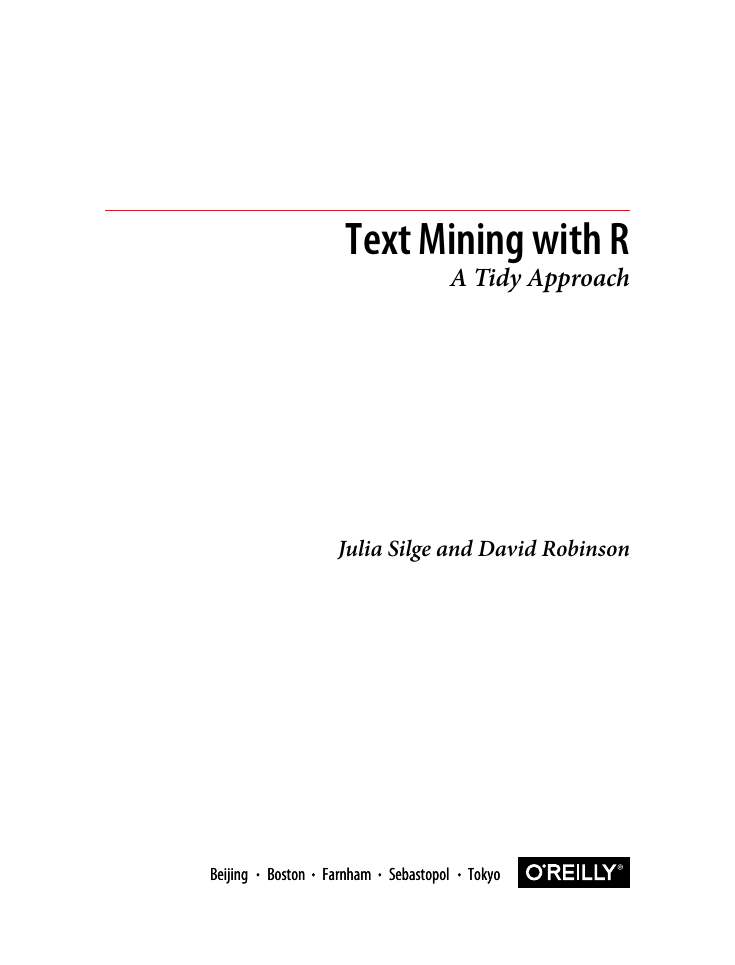
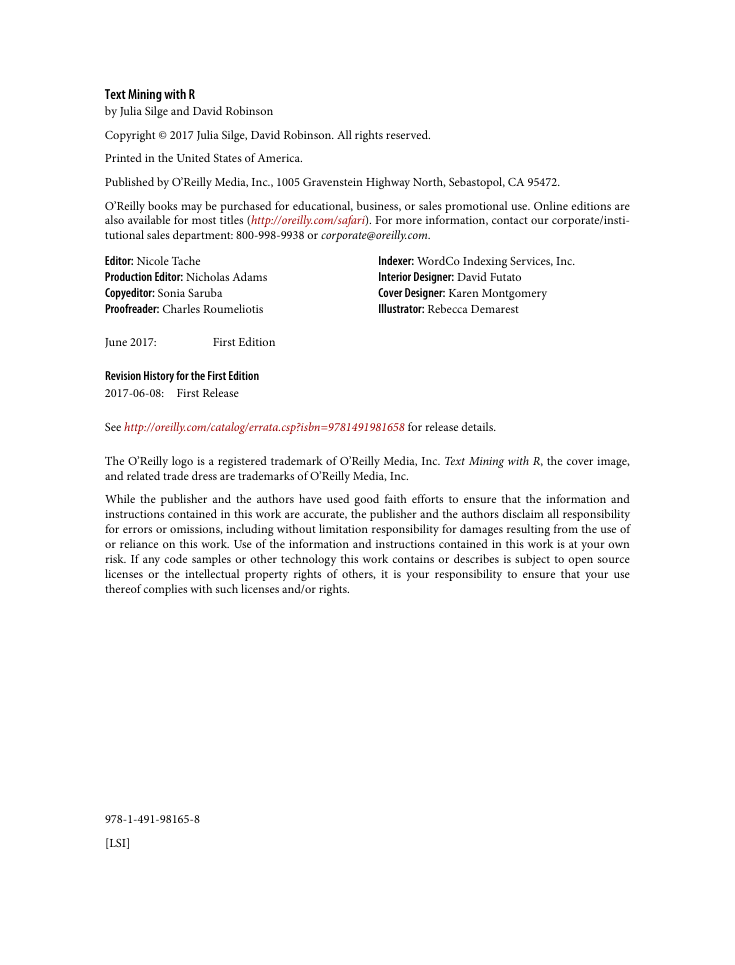
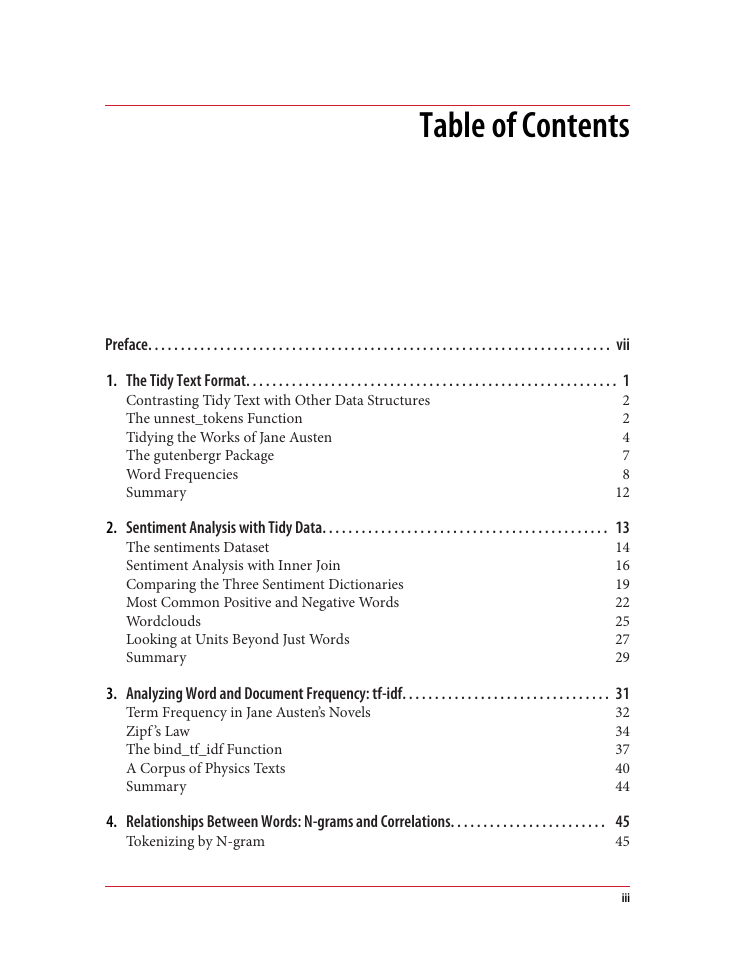
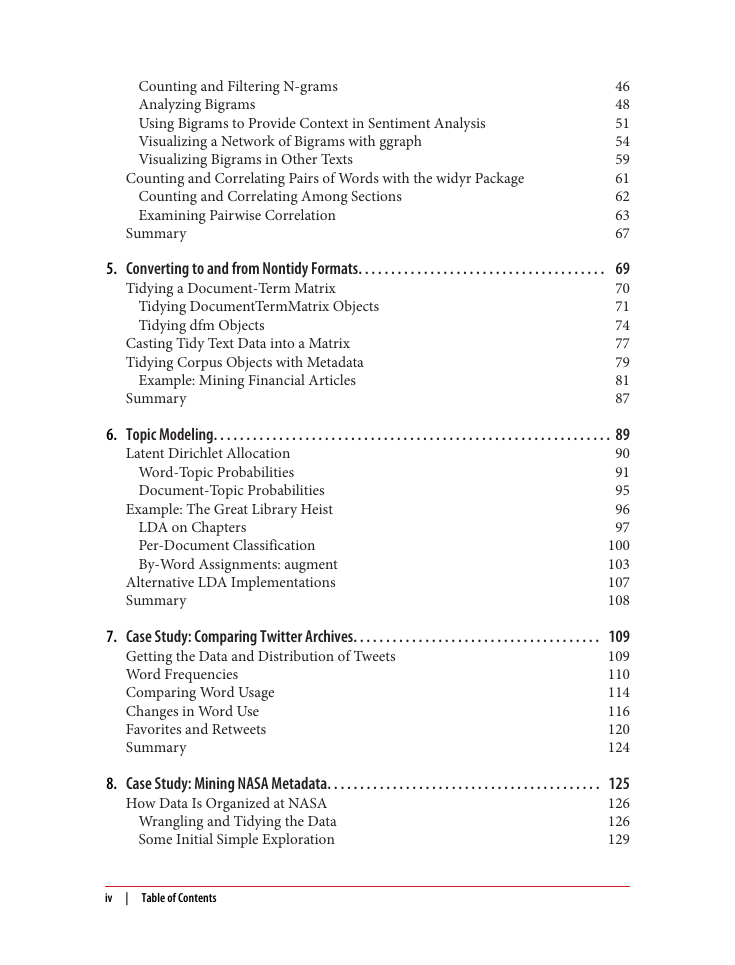
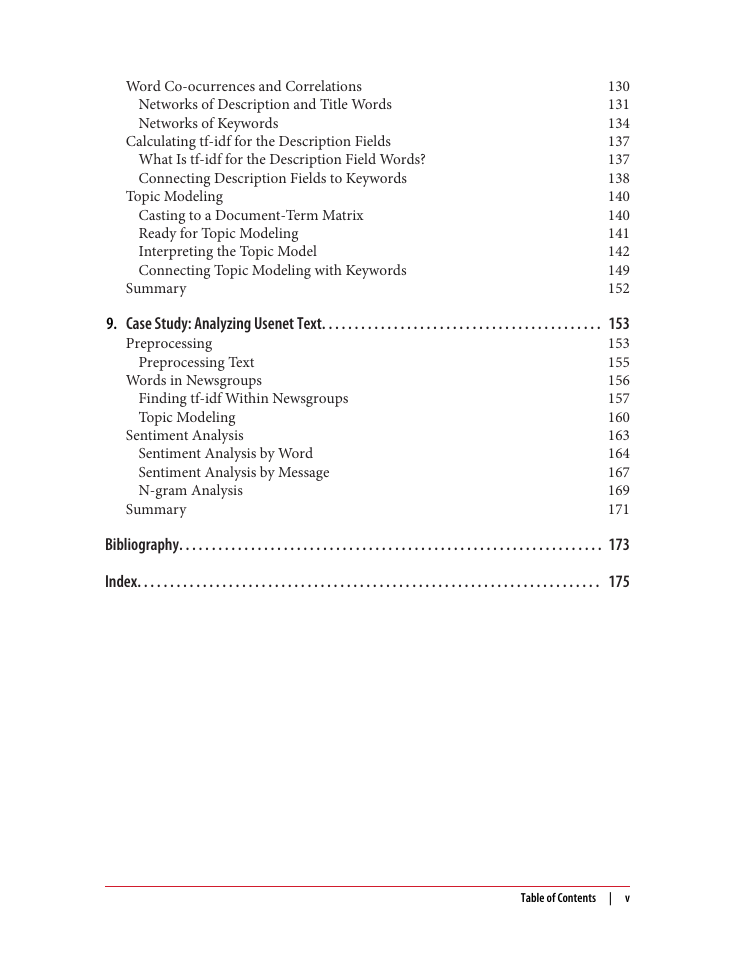

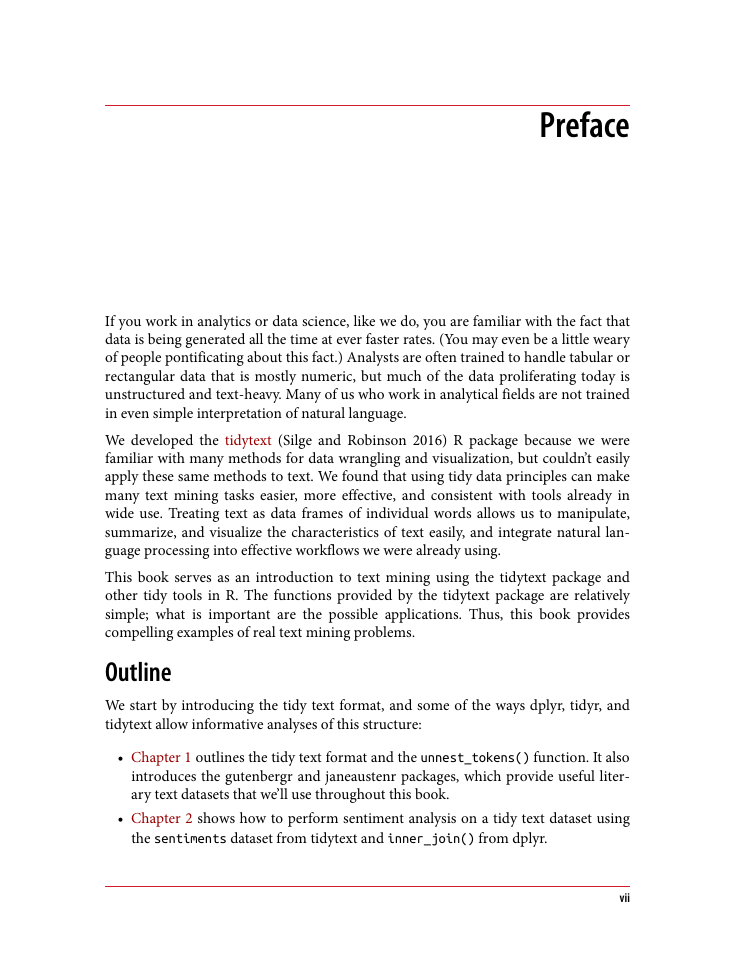








 2023年江西萍乡中考道德与法治真题及答案.doc
2023年江西萍乡中考道德与法治真题及答案.doc 2012年重庆南川中考生物真题及答案.doc
2012年重庆南川中考生物真题及答案.doc 2013年江西师范大学地理学综合及文艺理论基础考研真题.doc
2013年江西师范大学地理学综合及文艺理论基础考研真题.doc 2020年四川甘孜小升初语文真题及答案I卷.doc
2020年四川甘孜小升初语文真题及答案I卷.doc 2020年注册岩土工程师专业基础考试真题及答案.doc
2020年注册岩土工程师专业基础考试真题及答案.doc 2023-2024学年福建省厦门市九年级上学期数学月考试题及答案.doc
2023-2024学年福建省厦门市九年级上学期数学月考试题及答案.doc 2021-2022学年辽宁省沈阳市大东区九年级上学期语文期末试题及答案.doc
2021-2022学年辽宁省沈阳市大东区九年级上学期语文期末试题及答案.doc 2022-2023学年北京东城区初三第一学期物理期末试卷及答案.doc
2022-2023学年北京东城区初三第一学期物理期末试卷及答案.doc 2018上半年江西教师资格初中地理学科知识与教学能力真题及答案.doc
2018上半年江西教师资格初中地理学科知识与教学能力真题及答案.doc 2012年河北国家公务员申论考试真题及答案-省级.doc
2012年河北国家公务员申论考试真题及答案-省级.doc 2020-2021学年江苏省扬州市江都区邵樊片九年级上学期数学第一次质量检测试题及答案.doc
2020-2021学年江苏省扬州市江都区邵樊片九年级上学期数学第一次质量检测试题及答案.doc 2022下半年黑龙江教师资格证中学综合素质真题及答案.doc
2022下半年黑龙江教师资格证中学综合素质真题及答案.doc